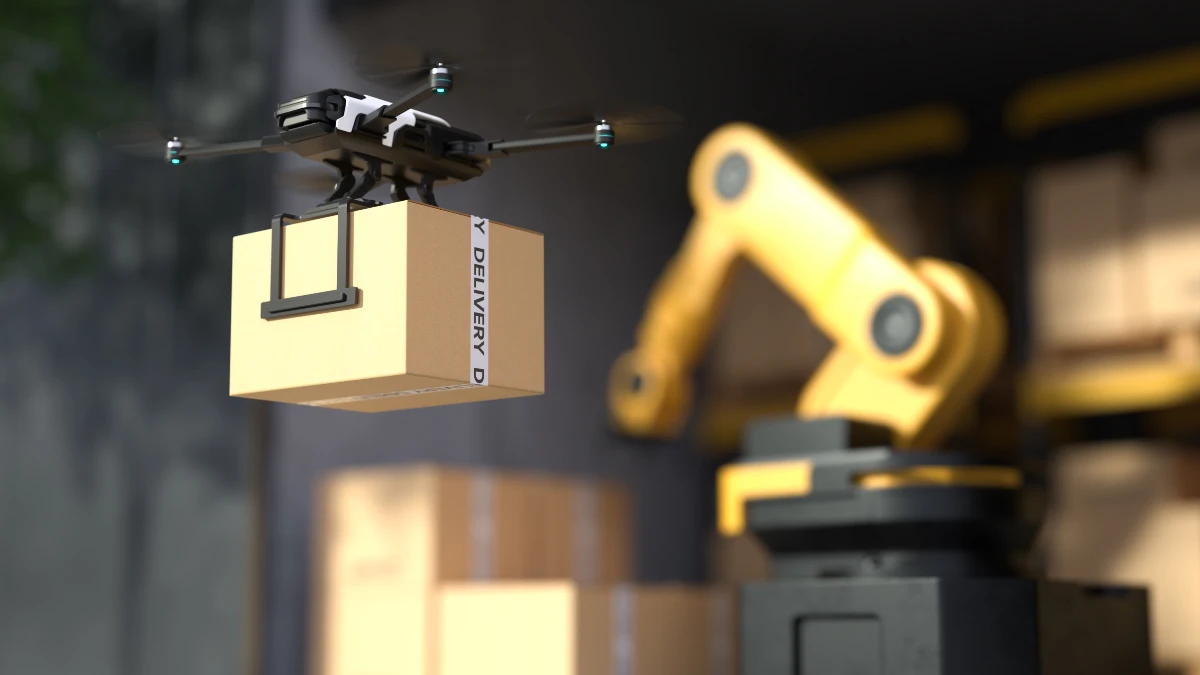While many debate AI, a quiet group is using it to print revenue. This isn’t hype; it’s math. 2025 data shows an AI chatbot interaction costs just $0.50, while a live agent costs $6.00—a 12x difference.
Sales teams using AI are growing revenue, and service teams are resolving massive ticket volumes. This guide details 12 ways to make money with AI in 2025, with live data for each. You’ll get proof-driven plays for ads, Amazon, and micro-SaaS, focusing on cash-flow plays, not science projects.
Run AI-Automated Ads That Lift ROAS (Meta Advantage+ & Google Performance Max)

You can increase ROAS by letting the platforms’ AI find signal. You speed up creative testing. On Meta, Advantage+ Shopping Campaigns have shown meaningful performance lifts. This was seen in a large multi-test analysis. Meta’s 31-test meta-analysis reported a +32% ROAS gain. This gain occurred when Advantage+ Shopping was added to business-as-usual campaigns. That is the sort of lift you rarely get from manual tinkering.
Pair this with broad audiences and a weekly creative rotation. This keeps learning fresh. On Google, Performance Max (PMax) combines search, Shopping, YouTube, and more. It puts them into one budget governed by AI. Do not treat PMax like a black box. Treat it like an incrementality engine. Keep brand search in its own campaign.
Keep your product feed clean. Validate impact with marketing-mix modeling (MMM) or geo-experiments. Do not rely on last-click attribution. Nielsen MMM case studies document PMax driving incremental conversions. It also documents lower CPAs. This provides the kind of independent proof finance teams expect. Do this: start with one Advantage+ Shopping and one PMax campaign per product line.
Hold out geos to measure lift. Set your weekly ritual to ship 3–5 new creatives. Use AI video/image tools for this. You will use Amazon’s video generator later if you also sell there. Track iROAS/CPA versus your manual baselines. Shift budget when lift is real. This is a fast path to improve ROAS without expanding headcount.
Turn Support & Website Chat Into a Sales Engine (AI Agents)

AI agents now resolve a huge share of recurring questions. They route buyers to meetings. The numbers are public. Intercom’s Fin has averaged about 51% automated resolution “out of the box.” Customers absorbed spikes up to +690% in support volume without hiring. Treat support as a pre-sales surface, not just a cost center. Map deflection and pipeline metrics.
These metrics include meetings set and MQL to SQL conversion. Shoppers themselves are using AI chat more often. During the 2024 holidays, chatbot use rose about 42% year over year. This is according to Salesforce’s global shopping data. Set your bot to answer product questions. The bot should also check order status. It must hand off warm intent to reps instantly. You will see conversion lift in the same week.
You will also see lower response times. How to deploy: train your bot on help-center articles. Train it on your product catalog for precise answers. Add a conversion path. This path could be a CTA to book a demo or start checkout. Measure automated resolution, CSAT, and pipeline from chat. If you need a baseline, tools like Drift note engagement gains. These gains are for open-text AI chat over buttons. Use this as a design cue. Run your own A/B testing.
Email & Lifecycle Marketing With AI (Flows That Print Cash)

AI makes lifecycle programs faster to build. It makes them smarter to target. Case studies show these flows drive real revenue. In Klaviyo’s customer stories, apparel brand Jordan Craig grew email revenue 54% year over year. This followed reorganizing cadence and expanded flows. Automated flows now account for about 30% of revenue.
Use that as your model. Build welcome, browse/cart abandon, post-purchase, and win-back flows first. Then add SMS where it strengthens recovery. Use AI to draft segmented content. It can also predict send-time and next purchase dates. Optimize to LTV, not opens.
In practice, that looks like: (1) segment by predicted reorder windows. It also looks like: (2) feature dynamic recommendations. And: (3) split test offer tiers for high-value versus price-sensitive segments. Keep a monthly creative refresh cadence. Do this like you do in paid media. The same principle applies to inbox fatigue.
AI-Assisted Coding to Ship Products Faster (Micro-SaaS)

If you can ship fast, you can sell faster. A randomized trial found developers using GitHub Copilot completed a task about 55% faster. This was compared to those without it. This is a clean, causal result. It explains why solo builders are releasing micro-SaaS at high velocity. They are capturing subscription revenue. Enterprises echo the gain.
GitHub and Accenture report measurable productivity in field studies. Turn that speed into cash flow. Pick a narrow B2B pain. Examples include a reporting add-on, a connector, or a compliance helper. Ship a v1 in weeks. Monetize with Stripe subscriptions or usage-based pricing.
AI coding assistants help you cover more surface area per week. This includes features, tests, and docs. Use a weekly release rhythm. Talk to users every cycle. The caveat: keep a tight QA loop. Faster code does not excuse bugs. The data shows productivity. Quality is still on you.
Prospecting & Personalization at Scale (Outbound That Converts)

Outbound still works when it is timely and personal. Platforms are now embedding AI directly into prospecting. Apollo publicly reports that AI-drafted, Claude-powered messages are driving 35-plus percent increases in meetings booked. This is happening with millions of AI messaging actions monthly. That is the scale signal you need to try it. Use it with guardrails.
Enrich your ICP with firmographic data and trigger events. Trigger events include hires, funding, and tech changes. Then let AI draft context-aware openers for each lead. Layer LinkedIn intent and your product telemetry to time the outreach. Always keep a human in the loop for compliance and tone. Protect domain reputation with warm-up and throttling.
A/B test first lines at scale. Measure reply to meeting rate and meeting to SQL rate. If meetings grow without burning domains, you have found durable lift.
Amazon Sellers: Let AI Optimize Listings, Ads & Video

Amazon has moved fast on AI creative. In June 2025, Amazon Ads rolled out an enhanced AI Video Generator to all U.S. advertisers. This creates high-motion, multi-scene product videos in minutes. It also summarizes existing footage into ad-ready cuts. That means more high-quality ad variants without studio budgets. This is an immediate lever for CTR and CVR. Combine that with AI-assisted listing improvements and ad bidding from seller tools.
For market context and what other sellers are doing, see Jungle Scout’s 2025 State of the Amazon Seller. Nearly 1,500 sellers were surveyed. It highlights cost pressure and the shift in creative/ad strategies this year. This is useful when you need to benchmark your ad spend and pricing tests.
Treat this as your annual reality check on what is working in the marketplace right now. Your cadence: clean your catalog data (attributes, images). Ship AI-generated videos per hero ASIN. A/B test primary images and first bullets. Re-score keywords weekly. Track share of voice, unit session percentage, and TACoS. That is how you turn creative speed into durable listing conversion and ad efficiency.
Creators: AI-Accelerate Shorts, Scripts, Thumbnails, Dubs

Creators making the most money in 2025 are speeding up scripting. They are also speeding up captioning, thumbnail design, and translation with AI. They then monetize across YouTube, TikTok, and Instagram. They also build an email list they own.
On YouTube, the Shorts model is clear. Creators keep 45% of their allocated revenue from the monthly Creator Pool. That is a transparent baseline to forecast payouts from your Shorts views. On TikTok, the Creator Rewards/Creativity Program replaced the old Creator Fund in major markets. This program rewards longer, original videos.
If you are pushing into minute-plus content, AI tools help you publish more without a team. These tools are for writing, editing, dubbing, and B-roll. Use platform-native analytics to chase retention, not just views.Negotiate affiliate and sponsorships once your RPM math is clear.
Courses, Templates & Digital Goods—Made Faster With AI

If you sell digital products, AI shortens time-to-market. Digital products include courses, templates, prompts, and spreadsheets. Draft your outline, slides, and quizzes with AI. Validate demand with a live workshop before you record a full course. Platforms report continued growth.
Klaviyo’s case set shows strong lifecycle monetization for niche brands. Creator-commerce ecosystems continue to publish healthy YoY gains. Use Gumroad/Teachable for checkout and gating. Use email/SMS to run launches and evergreen funnels.
Keep it simple: one problem, one promise, one product. AI helps you version templates for sub-niches and local markets. It helps you produce walkthrough videos quickly. Track conversion, refund rate, and student completion. This trio keeps LTV strong when ads get expensive.
Localization With AI to Unlock New Markets

Localization is direct money when you do it past the blog. Think product pages, support, checkout, and emails. Case studies show conversion lifts when brands localize properly.Weglot highlights a customer seeing +20% conversions after German localization. Plan for human QA on top pages. Track localized CVR and AOV per market.
You will often find two or three languages pay for the whole program. Market size signals seriousness. Industry trackers place language services in the tens of billions for 2025.Slator’s sizing is $31.7B. That spend backs the vendor ecosystem you will use.
This includes translation memory, term bases, and AI-assisted workflows. These have price points that make sense for SMBs. Add hreflang, a visible language switcher, and local payments/shipping copy. Review weekly search console data to expand winning locales.
No-Code Automations That Save Headcount (Ops & Back Office)

Automation is a headcount strategy. Use Zapier/Make and spreadsheet copilots to eliminate manual routing. Also eliminate invoicing, reconciliation, and status reporting. Then redeploy hours to sales or product. Zapier’s own guidance shows how to measure adoption.
This includes active usage, workflows deployed, and training completion. Borrow these metrics to keep your ops honest. In 2025, the job is less “add AI” and more standardize and scale what is working. Start where errors are costly. These areas include lead routing (speed-to-lead), invoice reminders, renewal alerts, and weekly ops rollups.
Give every automation an “agentic SOP.” This SOP defines what it does. It defines when it hands off to a human. It defines how it is monitored. When finance asks for proof, show hours saved. Show the revenue work those hours funded. This includes more calls, more demos, and faster shipping.
Design & Creative at Scale (Real Brand Results)

Creative is a growth throttle, not a nice-to-have. Brands using Adobe’s AI tools report big productivity and engagement gains. Adobe and IBM describe campaigns where Firefly-assisted workflows generated 100 assets and 1,000-plus variations in minutes.
Adobe’s industry page cites “26 times higher engagement” for IBM using Firefly-powered content. That is exactly what performance teams need: more on-brand variants, faster. Your move: standardize brand kits in Adobe/Canva. Then schedule weekly creative-ops sprints to refresh winners. Refresh winners across paid and PDPs.
Use AI to extend hero shots, swap backgrounds, version copy, and produce short demo videos. Track thumb-stop rate, save rate, and post-click CVR. Do not just track CTR. This ensures you can promote assets that actually sell.
Sales Teams Using AI Win More (Playbooks That Pay)

Sales data is plain. Eighty-three percent of sales teams using AI grew revenue last year. This compares to sixty-six percent of those without it. This is according to Salesforce’s State of Sales. If you need an internal mandate, use that stat. Then operationalize.
Use AI for call summaries, follow-ups, forecasting, and deal-risk signals. Coach reps with conversation insights and proposal personalization. Track win-rate uplift and cycle time versus baseline. Leaders are also reporting faster prep. They report higher accuracy from AI agents embedded in CRM workflows. Point your revops team at the highest-frequency tasks first.
These tasks include follow-ups and next-step emails. Then fold in pipeline risk scoring. The quick wins will buy you political capital for the bigger changes. These changes include territory design and pricing ops.
